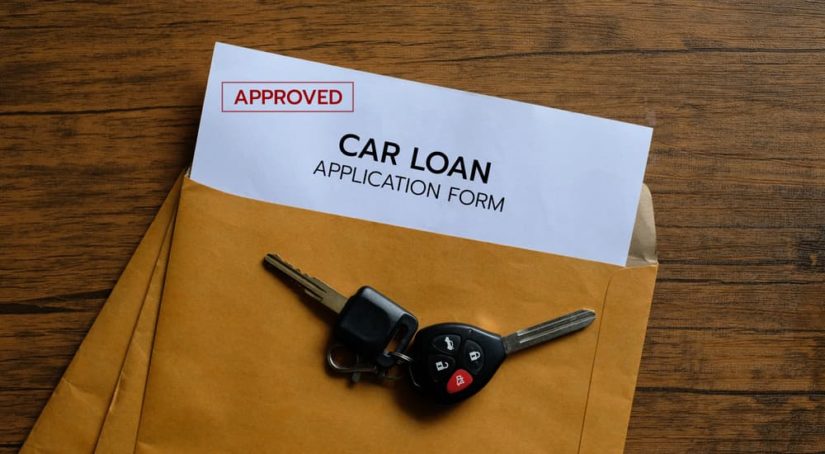Even if you’re someone who enjoys shopping for a car, figuring out financing and how to pay for it probably isn’t what you’re most looking forward to. If you’ve got less-than-great credit or little in the way of credit history, then the entire thing can become a lot more complicated, and there are far more pitfalls you need to be wary of while shopping. Depending on your situation, you may need to look for subprime auto loans in order to help you pay for your next vehicle, but it’s important to remember that not all of these loans are the same.
Sadly, I can’t do your car shopping for you, and I can’t be there next to you when you’re trying to figure out everything in order to get the right vehicle with payments you can afford. What I can do, however, is provide you with some guidance to help you find the right loan and some tips to keep in mind while you’re shopping. Not all of this will apply to you, and you might not be able to follow all of the “it’s best if you can” sort of advice, but every little bit helps when trying to get the right car and make sure it fits your budget.
First, Understand Credit Scores and Levels
Before we go any further, I need to make sure we’re all on the same page about what I mean by “subprime credit” or “bad credit.” I’m talking about your credit score, which is determined based on a number of factors, such as how much money you make, your total available credit, and how much of your credit is currently being used. Other things like making late payments on a loan or credit card, missing payments, or defaulting on a loan can all negatively affect your score. The result is a score that a lender looks at to determine what sort of risk you are––a higher score is better. Credit scores are divided into a few different levels:
- Super-Prime: 781 and above
- Prime: 660-780
- Near-Prime: 620-659
- Subprime: 580-619
- Deep Subprime: 579 and under
The score numbers associated with these levels can change, but this is a general idea of where you will land. Ideally, you want to be in Prime or Super-Prime, though that’s not always realistic. Near-Prime is still a great place to be. If you’re here and reading this, then you’re probably in the subprime category, which can make finding a car loan, particularly one with good terms, a challenge. So, here are some of the key things you need to know and consider when it comes to your credit score and getting a vehicle loan.

Key #1 – Time Is Your Ally
The single biggest tip I can give you when shopping for a car, in general, regardless of anything else, is that you want time to be on your side. It’s far easier to shop and compare vehicles, look for different financing options, and take your time to get the best deal if you’re not desperately in need of a vehicle yesterday! Do everything you can to get ahead of your need for a vehicle, and give yourself some time to shop effectively and not have to make any rushed decisions.
Key #2 – Know Your Score, Work to Improve It
This could be tough: the first thing you need to do is know what your credit score is. I know that this is scary for a lot of people, especially if it’s not going to be amazing, but you need to know exactly what you’re dealing with. For one thing, it might not be as bad as you think, and even if it is, then it’s still better to know where you’re at than to just guess.
Here’s where having time can really help you out: your credit score isn’t an immutable number etched in stone––it can be changed and improved. If you have six months before you’re going to need a vehicle, then you should start working on improving your credit score today. Make all of your payments on time, work to reduce any debt you have, and improve how much credit is available to you without increasing your debt.
The average used-car loan for someone with a Subprime credit score comes with about 17% interest, according to information from Investopedia. By comparison, the average loan for someone with a Near Prime score comes with about 10% interest. That’s a massive difference and can honestly result in thousands of dollars saved over the span of repaying such a loan. If you’re sitting at a 600 credit score, and you have half a year or more before you’ll need a loan for a car, it’s not impossible to get yourself up into the Near Prime range and get much better offers.
Key #3 – Start With Your Bank or Credit Union
If you have a bank account or one at a credit union, then start your search for an auto loan there with them. This is honestly true for anyone, no matter what your credit score is, but it’s particularly important if your credit isn’t in great shape. The average interest rate for a subprime car loan from a bank is about 10%, while it’s between 15% and 20% from a finance company or a Buy Here Pay Here dealership, according to the Consumer Financial Protection Bureau. Your bank already knows you, and is where you should start when looking for a loan.
Key #4 – Figure Out Your Budget and Stick to It
One of the biggest traps that a lot of people can fall into is getting too much car or house for their budget, then making late payments, missing payments, or defaulting on a loan. If your credit is in rough shape, making payments on time on an auto loan and paying it off on time is one of the best ways to improve your score. Figure out what you can afford, realistically, for a monthly payment, and stick to that. Don’t let a salesperson talk you into more car just because they say they can get you a bigger loan; only buy what you can afford.
Key #5 – Pay Careful Attention to All Terms
When you’re looking at loans, take your time (remember Key #1) to read the terms and conditions of each offer very carefully. Look at the principle (the amount you’re borrowing), the interest rate (extra that you pay in addition to the principle), and the term of the loan (its length or duration, usually in months). Get a principle that’s as low as possible––having a trade-in, cash deposit, and negotiating a low price all help with this––and go for the best combination you can find for low interest and short term. Just remember that interest and term will both impact your monthly payments, so stick to what you can afford to pay.

Key #6 – Watch for Extra Fees
Subprime auto loans are notorious for coming with a number of hidden or extra fees that will cost you money if you’re not careful. Be aware of any processing or origination fees for a loan, along with a service contract that you’ll have to follow for repairs or maintenance––these can cost you unexpected money. Also, check for a prepayment penalty that you’ll trigger if you want to pay the loan off earlier than its full term. These are used to ensure the lender gets as much as they can if you try to skip some interest by paying early.
Key #7 – Shop Around as Much as Possible
When you’re shopping, your best bet is to use technology and everything else at your disposal to shop around as much as possible before you sign anything. Look for the best rates from different lenders, talk to different dealerships, e-mail dealers in your area to get their best offer, and then see if they’ll one-up each other. As long as you have the time for it, being able to shop around is the key to getting a vehicle at the best price.
Finally, Remember: You’ve Got This
Shopping for a car can be stressful; figuring out financing and wrestling with credit history can be stressful, but you’ve got this. Give yourself time, remember to breathe, and do your best to never shop for a car while you’re hungry––that will just make everything worse. It can absolutely feel like the deck is stacked against you when you’re shopping for a car with bad credit, but even though you can’t reshuffle, you can certainly change the cards that you’re holding. Take each step of the car-shopping process one at a time, and never let yourself be pressured into something. The end result will be more than worth it!



